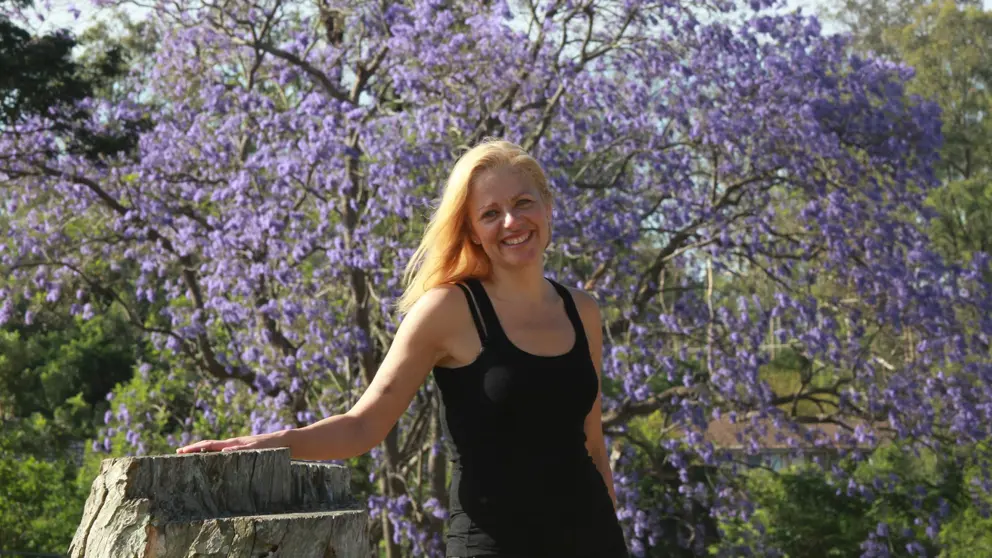Annie Richard survived four close calls with heart disease. Neither she nor her doctors recognized the seriousness of her problem until it was almost too late.
Since childhood, she had experienced occasional irregular or racing pulse. She thought it was linked to stress and doctors agreed, so she was never tested to see if it was something more severe.
At 28, Annie gave birth to her son Victor. By this time her palpitations had increased in frequency and severity, with episodes lasting 45 to 60 minutes. When Annie's mother, a nurse, witnessed an episode, she insisted that Annie go to emergency.
It took three doses of adenosine to slow her heart, which was racing at 256 beats per minute. The emergency team sent Annie to the Montreal Heart Institute (MHI), where she was diagnosed with paroxysmal supraventricular tachycardia, a form of abnormal heart rhythm or arrhythmia.
A catheter ablation stopped Annie’s episodes of tachycardia. She felt occasional chest pain, but tests showed nothing abnormal. Her cardiologist and her family doctor were not worried; after all, she was young and active, with healthy lifestyle habits.
Pain and denial
Then on a December evening six years later, Annie’s then husband was recovering from acute appendicitis, so she shovelled the snow from in front of their house. When she went outside the next morning to clear her car, she suddenly felt a sharp pain in her chest and back.
“It was like a blazing fire. I thought I was going to collapse, but I managed to get myself back inside.”
She lay on the couch with her thoughts swirling. “I can’t be having a heart attack. I’m too young. I eat well, I play sports. I’m healthy!” Annie convinced herself the pain was from gastroenteritis or gastric reflux; she didn’t call an ambulance.
It was like a blazing fire. I thought I was going to collapse.
Her denial continued even when the pain kept returning the following weeks, after even minor exertion. “I started taking Aspirin as a precaution. I thought I would go see the doctor after the holidays.”
On the night of Jan. 1, Annie woke up sweating and nauseated, with pain in her back, neck, left arm and jaw. "Again, I rationalized my symptoms, and I didn’t want to wake up my family. I took more Aspirin, went back to bed and waited for the pain to pass.”
But after researching her symptoms online the next morning, she knew she had to get to a hospital. She headed for MHI.
A dramatic diagnosis
It took several hours and rounds of tests, but finally the doctor had an answer for Annie. “She closed the curtains around my bed, took my hand and told me that I had a heart attack the night before. It was a real shock.”
It turned out one of her coronary arteries had ruptured, likely when she was brushing snow off her car weeks earlier. As a result, the artery was completely blocked, so the next day, doctors installed a stent to open the artery.
Annie had to adjust to her new reality. “At 39, you’re not prepared for a heart attack. Unfortunately, heart disease can strike anyone, anytime.”
Annie attended a cardiac rehabilitation program at the MHI Epic Centre, which helped her accept what had happened, and to improve her diet and her active lifestyle even more. The mental adjustment took longer. “I cried a lot, but now it's behind me,” she says. “The illness was an opportunity to take stock of my life.”
In search of a cause
But the cause of Annie’s heart attack remained a mystery. At checkups with her cardiologist, her heart seemed healthy and her arteries were clear, but she continued to suffer several episodes a week of sometimes severe angina (chest pain).
And then, five years later, she had another heart attack. At first, the doctor in emergency thought she had a lung problem due to a cold — despite Annie’s history of heart problems. And a year after that, she had yet another attack.
Thankfully, during the angiogram, the cardiologist spotted spasms in her artery, and Annie finally received the correct diagnosis of vasospastic angina. It’s a rare condition in which chest pain results from a spasm in the coronary artery. Fortunately, it is treatable with medication although presently incurable.
Today, Annie is focusing on activities that make her happy, like sailing, cross-country skiing and building her consulting business. She is determined not to allow the disease to take control of her life.
“I feel good; I am very happy. The disease will always be there, but I'm learning to live with it. Contrary to what many believe, including at first myself, there is life after a heart attack.”
-
Learn more about women and heart disease in the Heart & Stroke 2018 Heart Report.
-
Know the signs of a heart attack .

